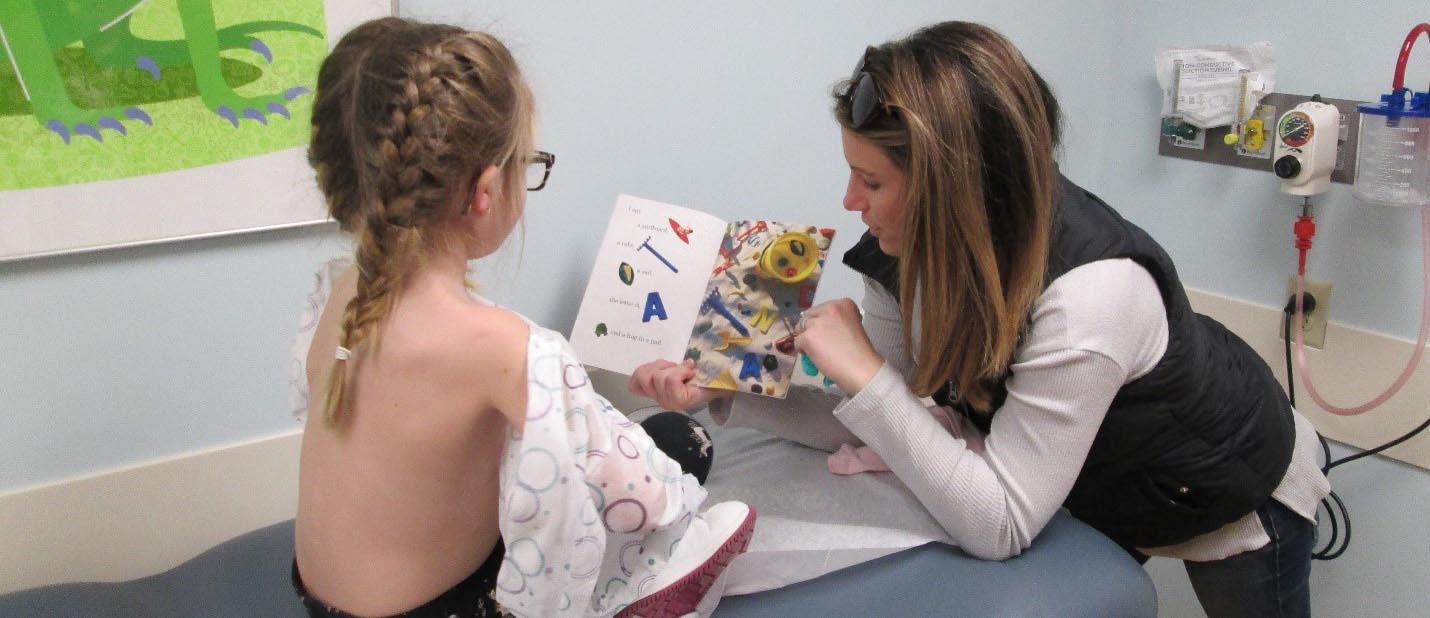If your child has an upcoming allergy skin prick test, you may be wondering what is involved. After all, you were informed that you could be in the allergy clinic for a couple of hours. So what exactly happens during this test?
What is an Allergy Skin Prick Test?
First, let’s describe what it is. During an allergy skin prick test, also called a puncture or scratch test, a tiny amount of the suspected allergen is placed under the skin to see if it causes an allergic reaction. This test can either confirm or deny an allergy to a specific substance and works for both food and environmental allergies.
For food allergies, we will obtain your child’s history and the doctor will determine which foods to test. The most common food allergens are: milk, egg, fish, shellfish, tree nuts, peanuts, wheat and soy. The basic environmental panel tests for the 13 most common allergens. There is a more in depth screening that contains 40 different allergens and includes both indoor (dust, mold, cockroaches, etc) and outdoor (trees, grasses, etc) triggers.
Why Does My Child Need An Allergy Skin Prick Test?
Second, let’s talk about why your child might need it. Because allergic conditions are the most common health issue affecting children in the U.S., we need a quick and accurate way to determine the source of the problem. The National Health Interview Survey states that 8.4% of U.S. kids under the age of 18 have hay fever; 10% have respiratory allergies; 5.4% have food allergies; and 11.6% have skin allergies.
While the test is great at confirming or negating an allergy to a substance, unfortunately it can’t tell us HOW allergic a patient is to it. But, once your allergist knows what your child is allergic to, he or she can help you develop an avoidance and treatment plan.
Who Can Get The Test?
We administer the test to kids of all different ages with varying suspected allergies. For instance, we see a lot of infants whose parents are introducing them to solid foods. Either the baby had an allergic reaction and they want to pinpoint what food it was, or sometimes parents are nervous to feed a particular food to their baby and want peace of mind before they start. Another example is when kids are older and develop allergic rhinitis, or sneezing, stuffy and runny nose, watery eyes and itching. Sometimes a pet is suspected as the cause and families are hoping to rule it out.
What Is An Allergy Skin Prick Test Like?
Before we start, we’ll make sure that your child is healthy. If she is having any asthmatic symptoms, or showing signs of a viral infection, we will not administer the test, just to be safe. We can break the allergy skin prick test down to five steps:
1. DETERMINING LOCATION

We do the testing on either the patient’s back or forearm. If your child is young, we will likely do it on her back so that she can’t itch it. She can sit on one of her parent’s laps, belly to belly, during the process. Older kids usually opt to have the testing done on their forearm.
2. NUMBERING OR LETTERING

After we’ve chosen the location (and cleaned the area with an alcohol pad), we will number or letter the area based upon how many allergens we’re testing for. We will label each one so that we can keep track of the potential reactions. This will also include two control sites: a histamine and water scratch.
3. UTILIZING DERMAPICKS

Next we’ll use something called a dermapick to scratch the allergen underneath the skin. It looks like a toothpick and we use a tiny amount of the allergen to irritate the skin. This is not painful, but may cause some itchy discomfort. Typically, the itchiness only lasts about seven minutes or so. Even though the test is not painful, some children who have the test performed on their back get upset because they can’t see what’s happening. Distraction is key here! We have an awesome group of child life specialists who are very talented at getting kids to forget about it.
4. WAITING

After the test is administered with dermapicks, she’ll need to wait for 15 minutes to see if a reaction takes place. Once we leave the room, most kids forget about it because they’re reading, coloring, watching a moving or playing on an electronic device.
5. MEASURING

Once those 15 minutes are up, your allergist will measure the size of the reactions using a ruler. A positive reaction is one that is swollen and is typically anywhere from 3-5 mm in diameter, but can be much larger.
What’s Next?
After you’ve received the results of your allergy skin prick test, your allergist will help you develop an avoidance and treatment plan. For environmental allergies, this can include strategies for limiting indoor or outdoor exposures, medications, and even allergy shots. For food allergies, this may mean strict avoidance measures and creating an action plan, in the event that an exposure does happen.
To learn more about allergy and immunology at Cincinnati Children’s, or to schedule an appointment, please call 513-636-2601 or email AllergyResearch@cchmc.org.






Great presentation. Very informative